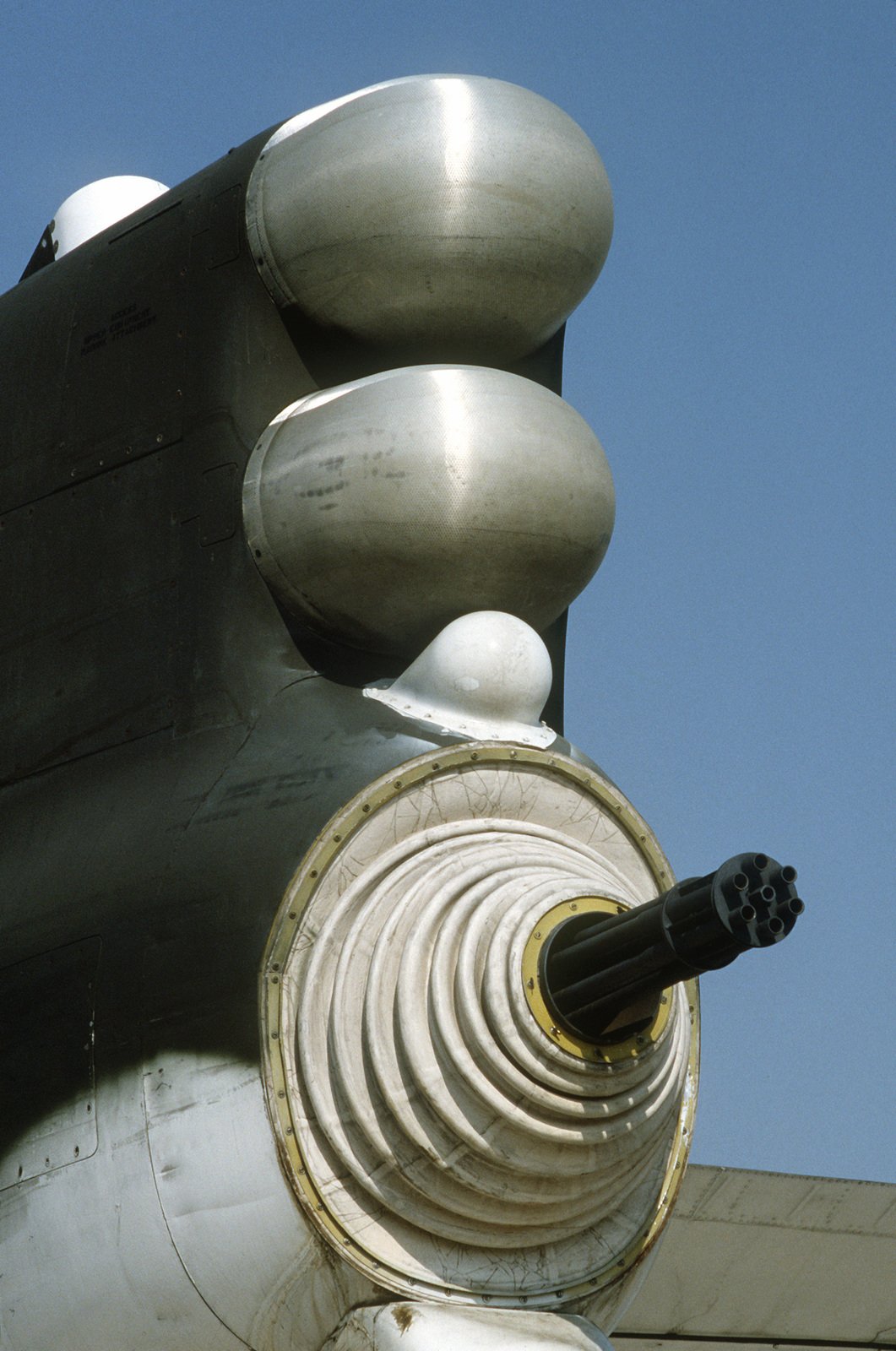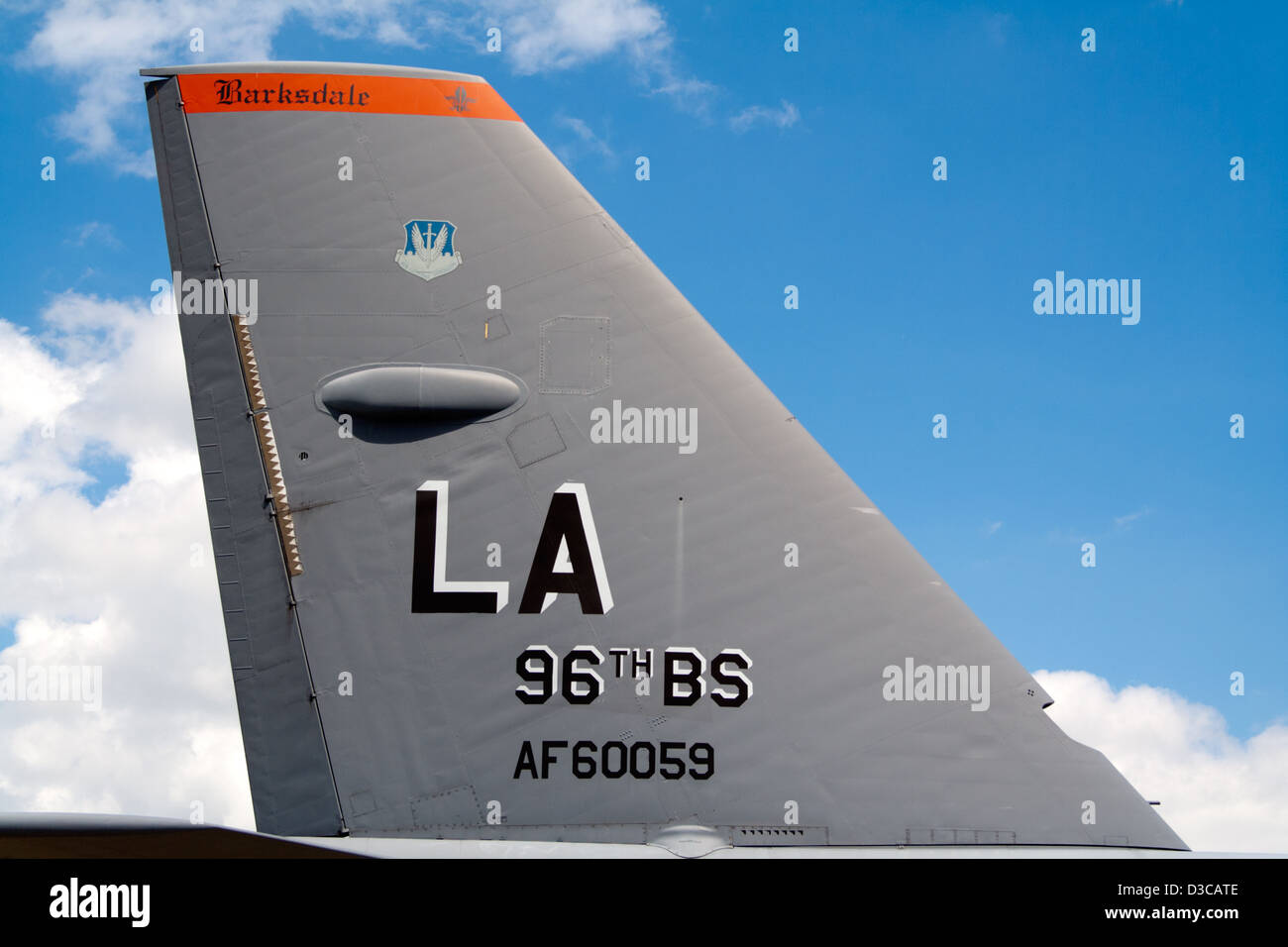B-52h Tail Gun - Master Sergeant Rob Wellbaum is the last person to serve as an Air Force lieutenant.
When someone retires, it marks the end of an era in their personal life. When US Air Force Chief Master Sergeant Rob Wellbaum leaves the service, he will end an entire era of air combat as America's last successful sniper.
B-52h Tail Gun
On May 12, 2017, Wellbaum retired after three years in the Air Force. When he first enlisted in 1987, the NCO entered Specialty Code 111X0—Aerial Defense Gunner.
Boeing B 52h Stratofortress, Revell 1:144
"I went to the recruiting office and asked them what they were doing to get [employees] registered to fly," Wellbaum recalled in an interview. "My employer listed loadmaster, boom operator and B-52 air defense gunner. All three seemed to work well together, so that's what I asked for."
For the next five years, he served in that capacity on the B-52 Stratofortress bomber. This plane - more affectionately known as the Big Ugly Fat Fellow, or BUFF - was the last one in service to have a tail gun.
Master Sergeant Rob Wellbaum and his family stand in front of one of the 15th Wing's KC-10A Extender tankers., USAF
When the first B-52 prototype was rolled out of Boeing's Seattle facility in 1952, the aircraft's defensive armament was modified. For more than a decade at that time, America's main armaments, as well as small and medium-sized aircraft and naval patrol aircraft, were used to defend themselves against hostile enemies and capture.
Boeing Modernizes B 52 Bomber Weapons Bay Launcher
American workhorses of World War II, Boeing's B-17 Flying Fortress and Consolidated's B-24 Liberator were both loaded with machine guns at the end of their lives. Both companies specifically design weapon configurations to provide maximum coverage. Therefore, in addition to the guns on the nose and coming out of the sides and the top and bottom of the fuselage, a position of the gun was installed in the tail. From there, another member of the team can cover the soft rear end.
U.S. The entire training of the air force revolved around this defensive weapon. The wood-carrying aircraft will also fly in the nearby "boxes" to provide firepower that supports each other. Supporters of the American military believed that this method, combined with advanced aircraft designs, could avoid the need to conduct combatants.
World War II experience in the European and Pacific theaters proved this idea to be a pipe dream. Over Germany, American sailors suffered terrible losses until escort planes arrived. After one raid on Nazi factories in Schweinfurt on 14 October 1943, the Eighth Air Force lost more than 25 percent of its total strength.
"With the Schweinfurt missions came the end of the idea that the heavy bomber could 'just go for it,'" according to a 1955 Air Force memo. 1930 now it's just over."
Boeing B 52 Stratofortress: Could The B 52 Be Powered By Four Modern Engines (such As The Ge90 On The B777)?
Although this did not stop the carrying of weapons, it began to reduce the reliance of sailors on their weapons for self-defense. The Boeing B-29 Superfortress, which became a symbol of the fight against the Japanese, was equipped with many machine guns, including remote controls of the rear and ventral turrets. Its advanced tail gun mount, often referred to as the aircraft's "sticker", featured two .50 caliber M2 machine guns attached to a single 20mm M2 cannon. But with the Japanese Army and Navy Air Force all suffering, American companies began to leave some or all of these weapons in the field to reduce weight and increase time. log out.
A number of bomber designs continued to arrive after the war for the new Air Force, apart from full suites of defensive weapons. The B-50, a modified B-29, had the same guns. The first prototypes of Consolidated's large B-36 Peacemaker were multiple, retractable 20mm cannons, including a tail gun.
But technological progress has contributed greatly to this obsolescence. Most importantly, surface-to-air and air-to-air missiles have given ground-based air defense units and pilot pilots the ability to engage missiles from long distances, apart from the range of the shooter's guns.
Therefore, the Boeing B-47 Stratojet and B-52 left the weapons in the nose and fuselage. On both planes, the tail guns are the only traditional defensive weapons. Almost all B-52 variants have a radar-assisted tail position with four M3 machine guns, each firing at a rate of 1,200 rounds per minute. The final version, the B-52H, comes with a single 20mm M61 Vulcan cannon, capable of firing 100 rounds per second, at their location. In addition, the air search radar is powerful enough for weapons to serve as a navigational aid and assist in the maintenance of aircraft, as stated in the Air Force Magazine. On top of that, it can help guide the divers in a single cell on their journey during the storm.
Boeing B 52 Stratofortress By Ranwers
However, it was physically separated from the rest of the crew on the other side of the plane's main fuselage, as if it was a solitary act. Starting with the B-52G, however, the gun stayed with the rest of the crew in the main cabin. of the
Piece explained that this was done so that the crew could properly set up during the flight and put the gun into an ejection seat like the others, but "many guns who lamented the loss of public consciousness."
The Convair B-58 Hustler had a similar configuration with a single Vulcan cannon. At the same time, electronics and decoys to jam and confuse enemy radars, and flares to deflect heat-seeking missiles, became the primary source of defense.

Fast forward to the 1970s and the B-52 is America's only remaining heavy bomber. It was also the last aircraft in service to have a tail gun, whatever equipment it had at the time. Over Southeast Asia, two B-52D bombers were killed. Both cases occurred in North Vietnam in 1972.
Tail Machine Guns B 52 Hi Res Stock Photography And Images
"When the target was 2,000 yards away, I told the crew I was going to shoot," Airman 1st Class Albert Moore, who was responsible for the second kill, later explained. "I fired at the robber until he was starved and tripled in strength before suddenly disappearing from my radar range at about 1,200 yards, 6:30 am.
A gunshot from a nearby B-52 confirmed that Moore had shot down a North Vietnamese MiG-21. This was the last time that the tail gun of any army had a kill.
"Going home, I don't know whether to be happy or sad. You know, there was a man in that MiG, Moore wrote later. "I know he wanted to fly home. But that's the case for him or my crew. I'm happy with the change of scenery. Yes, I'll go again. Do I want another MiG? No, but given the same conditions, yes, go. I'm from somewhere else."
The Moore bomber, named Diamond Lil and tail number 55-083, continued in service until 1983. It is now located near the Air Force Base's right gate. Academy in Colorado Springs, Colorado. Moore died in 2009.
Convair B 58 Hustler
After the end of the Vietnam War, the Air Force continued to train personnel such as Master Sergeant Wellbaum to operate the guns on the remaining B-52s. After the collapse of the Soviet Union in 1991, the service decided it wasn't worth the trouble.
"My decision to remove weapons from the 'BUFF' was not an easy one," wrote Gen. George L. Butler, then head of the Strategic Air Command (SAC), in the air coalition in the fall of 1991. " It started from the fall of the Soviet threat and the face of the Severe budget cuts ... Our Air Force is going through a long period of turmoil as we adapt to a world that is changing dramatically.
In 1992, the Air Force removed the weapons from the remaining B-52Gs and Hs. The service's 111X0s, including Wellbaum, moved on to other jobs. The B-1 Bone and the B-2 Spirit did not have tail guns.

"We knew something was up, but we didn't expect it to be cut," Wellbaum said of the Air Force's decision to remove the BUFF's weapons for good and eliminate the tail guns. . "But the Air Force took care of us and opened many AFSCs, one of which is flight engineer."
Maintenance Work On The 20mm \
In total, Wellbaum accumulated more than 1,000 flight hours as a B-52 tail gunner. His last assignment was as commander of the 15th Operations Group, the air force of the 15th Pacific Wing, at Hickam Air Force Base in Hawaii.
Update 5/16/2017: Since this story was published, several readers have contacted us to let us know that there are still some early anti-aircraft weapons in the works. At first, it seemed that the government office of the 15th Wing was only
Boeing b-52h, b-52h stratofortress bombers, 1 72 b 52h, b 52h cockpit, b 52h model kit, b-52h, nasa b 52h, b 52h stratofortress, b 52h model, b 52h photos, b 52h, b 52h bomber

0 Comments